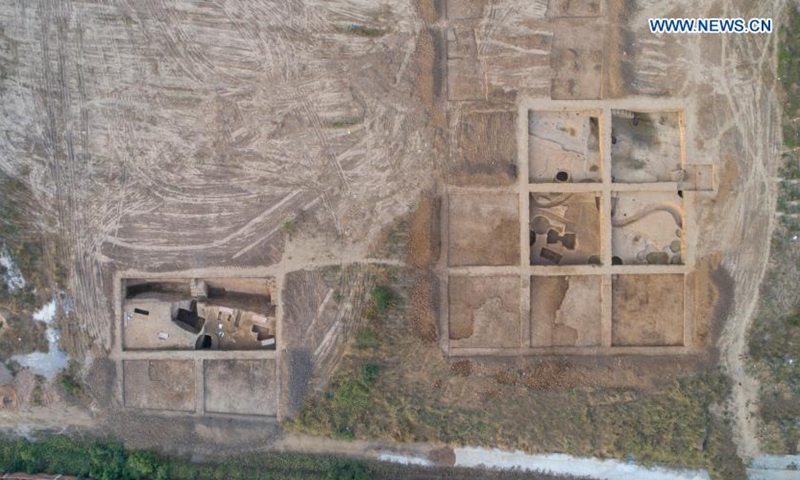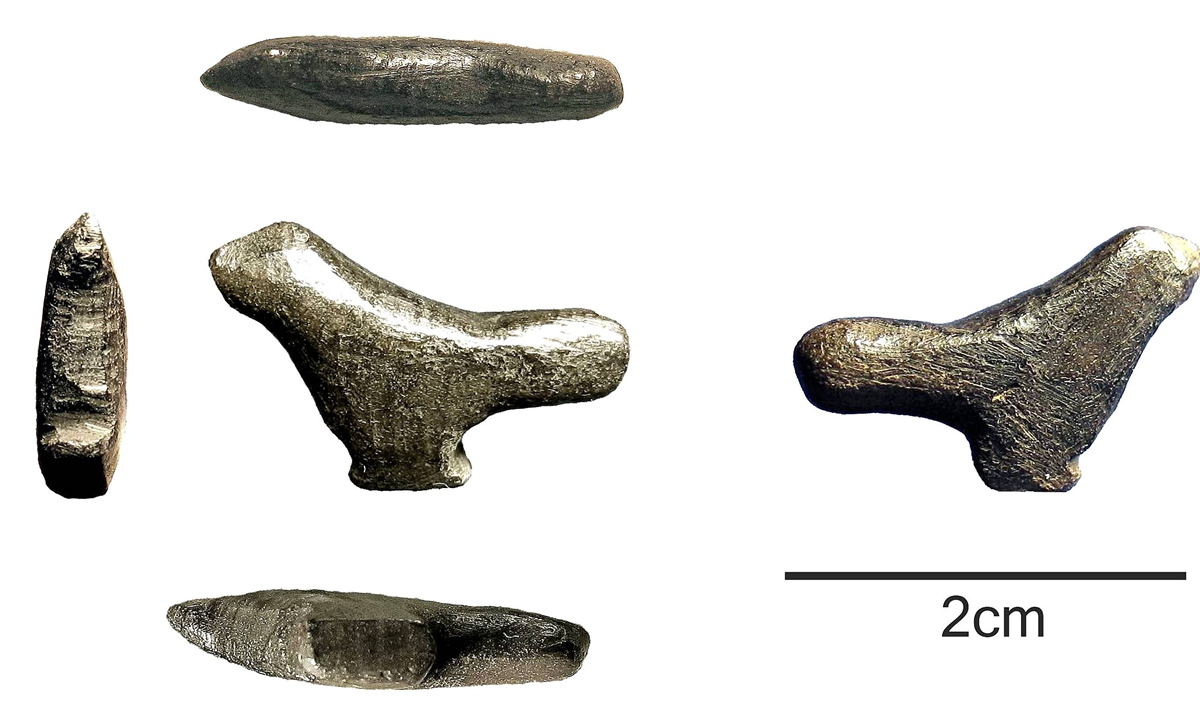
Aerial photo taken on Nov. 3, 2020 shows the excavation area of Yuzhuang Site, the ruins of a late Neolithic civilization dating back more than 4,000 years, in Yexian County, central China's Henan Province. (Henan Provincial Institute of Cultural Heritage and Archaeology/Handout via Xinhua)
A small bird-shaped sculpture that was discovered in Central China's Henan Province has been rated by the US magazine of Archaeology as one of the world's top 10 archaeological discoveries of 2020.
The sculpture was unearthed from the Lingjing "Xuchang Man" site in Henan Province. It is a tiny Paleolithic artwork with 19.2 millimeters in length and 12.5 millimeters in height. The bird statue was crafted from burned bone and dates back to 13,500 years ago. One side is dark brown and the other bronze colored. The sculpture shows a stout, short-headed bird with a round beak and long tail.
According to Archaeology, the figurine is believed to be the earliest three-dimensional artistic object discovered in East Asia. Though it is small in size, it is very exquisitely made. It has a general smooth surface, but with carved lines on the surface that implies the bird's feathers.

The Paleolithic bird figurine. Photo: Courtesy for Li Zhanyang
"It is tiny, which makes it tricky to hold. Though it is small, you can see its shape and details without a magnifying glass. When you put it down and use something to give it a little turn, it will spin around. It is very balanced and delicate," Li Zhanyang, head of the archaeology team that discovered the bird figurine, told the Global Times on Monday. Li, a professor at the School of History and Culture of Shandong University and a very well-respected paleoanthropologist, discovered two 100,000-year-old "Xuchang Man" skull fossils.
The unknown ancient artist who made this tiny figurine used different techniques such as grinding, cutting and scraping to sculpt it. The bird does not have feet or wings, but features a pedestal created by the craftsperson that replaces the bird's legs so it can be placed upright.
"It has more than 30 carved facets; the craftsperson trimmed it here and there. In the Paleolithic age, there were no flat surfaces such as tables and tools. How was it be made to be so balanced? There is a lot of room for imagination," Li noted.
The Paleolithic bird was first discovered in 2009, with research findings published in June 2020 on the international platform of the science journal PLOS ONE. The figurine is introduced in Archaeology's recent issue titled as the "Oldest Chinese Artwork."
"It has changed the Western people's thinking and understanding. Before they thought the East could not have such a good thing, it is unbelievable that we can see it," Li added.
Archaeology is a popular bimonthly US magazine that has been published for more than 70 years. Since 2006, it has listed the year's top 10 most influential and exciting archaeological finds from all over the world. A total of six archaeological discoveries in China have been included since the list began.
Besides with the bird figurine in China, other 2020 discoveries on the list include a Viking DNA study from Northern Europe and Greenland and the discovery of the first English Playhouse in England.



